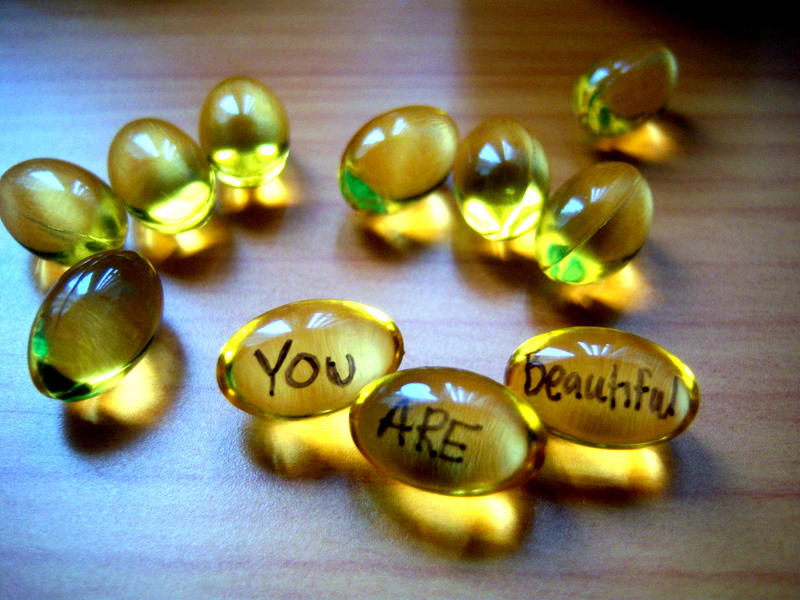With about a thousand different views (or more) on the way in which the six types of fats (good or bad) affect our bodies, most women don’t truly understand how to balance their diets. Though it is important to know what each of the fats do and where they come from, I am going to focus primarily on Essential Fatty Acids for this post.
Fats 101
For the sake of those of you who may not know what the fat types are, the following brief explanation should give you the basics.
Monounsaturated fats
These should make up most of the fats one eats. Monounsaturated fat remains liquid at room temperature but may start to solidify in the refrigerator. Foods high in monounsaturated fat include olive, peanut and canola oils. Avocados and most nuts also have high amounts of monounsaturated fat.
Polyunsaturated fats
These should be used in moderation. Polyunsaturated fat is usually liquid at room temperature and in the refrigerator. Foods high in polyunsaturated fats include vegetable oils, such as safflower, corn, sunflower, soy and cottonseed oils.
Saturated fats
These should be least used; however, recent studies have shown that they may not be as bad as we have been told for years. Saturated fat. Usually solid or waxy at room temperature, saturated fat is most often found in animal products — such as red meat, poultry, butter and whole milk. Other foods high in saturated fat include coconut, palm and other tropical oils.
Partially hydrogenated fats and chemically produced trans-fatty acids
These should be avoided. Trans fat, also referred to as trans-fatty acids, comes from adding hydrogen to vegetable oil through a process called hydrogenation. This makes the fat more solid and less likely to turn rancid. Hydrogenated fat is a common ingredient in commercial baked goods — such as crackers, cookies and cakes — and in fried foods such as doughnuts and french fries. Shortenings and some margarines also are high in trans fat.
Essential fatty acids
These are encouraged. Omega-3 fatty acids are polyunsaturated fats found mostly in seafood. Good sources of omega 3’s include fatty, cold-water fish, such as salmon, mackerel and herring. Flaxseeds, flax oil and walnuts also contain omega-3 fatty acids, and small amounts are found in soybean and canola oils.
The Different Essential Fatty Acids: EFA’s
Now that you know more about the different types of fats, let’s look at the one that we all should purposely add to our diets: Essential fatty acids or Omega-3 fatty acids. First, you need to know that there are two different kinds of Omega’s. While the Omega 3’s are gravely deficient in our diets; Omega 6’s are consumed in quantities that actually threaten our health, especially in the United States where vegetable seed oils like safflower, corn, and soy are used heavily.
To ensure a proper balance, you should consume a ratio of 1:1 Omega-3 to Omega-6. Wow, we are really missing that one by an unhealthy mile! According to the University of Maryland Medical Center, “The typical American diet tends to contain 14 – 25 times more omega-6 fatty acids than omega-3 fatty acids.” Research suggests that this practice could attribute for the increase of many kinds of diseases, especially those that include inflamation as the primary factor.
Health Benefits of Proper Omega-3 Intake
- Helps fight and prevent heart disease, cancer, depression, Alzheimer’s, arthritis, diabetes, hyperactivity and many other diseases
- Increases your energy level
- Increases your immunity to common colds and flus.
- Lowers a woman’s risk for pre-mature labor, low birth weight, and other pregnancy complications
Beauty Benefits
- Helps reduce acne
- Reduces skin inflammation
- Makes skin soft and supple
- Reduces dry and scaly skin
- Reduces premature wrinkles and skin aging
While a helpful form of Omega-3 can be found in flax seed oil, most physicians will recommend a type containing DHA and EPA that can only be found in fish oil. However, because of the Mercury content, many are switching to Krill oil. As quoted from HealthAmbition.com, “Krill (Euphausia superba) are small crustaceans which are similar in appearance to shrimps (you know, the really cute little guys in ‘Finding Nemo’)” This Omega-3/anti-oxidant powerhouse is more easily absorbed by your body so you need less to meet your EFA requirement. It also does not cause the gross and embarrassing burbing that other fish oils can.
Balancing the Omega-3 and Omega-6: How Much is Enough?
Because your current state of health, your diet, risk factors for disease, and even your medications can be factors in determining your needs, this is really something that you should talk to your health care provider about. However, eating a balanced diet with foods naturally containing EFA’s and even basic supplementation is likely enough for most people. Be well-be beautiful.
Resources: University of Maryland Medical Center , Mercola, and WebMD, HealthAmbition.com
Photo by Oh Sugar.
 Women's Life Link Be Well, Be Happy, Be YOU!
Women's Life Link Be Well, Be Happy, Be YOU!






The practical idea before all this writing about omega 3 and omega 6 is this: the diets we take in this 21st century have 20 to 50 times more omega 6 than what they should have to keep us healthy.
We take too much omega 6 and that produces all kinds of degenerative diseases in humans. That is why we should take omega 3 supplements, never omega 6. Think of omega 6 as the bad guys.
Read more at Omega 3 fatty acids